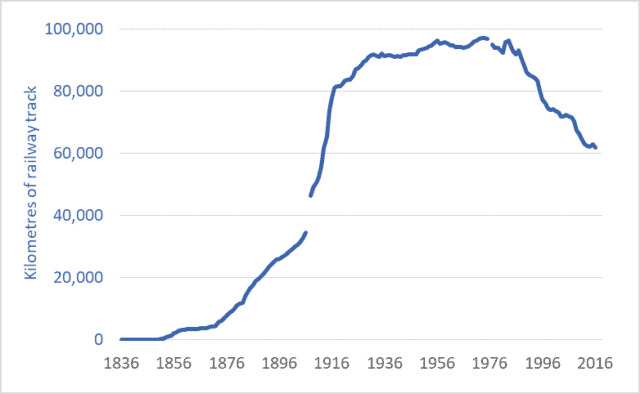Rail lines, not pipelines: the past, present, and future of Canadian passenger rail

One kilometre of oil pipeline contains the same amount of steel as two kilometres of railway track.* The proposed Trans Mountain pipeline expansion will, if it goes ahead, consume enough steel to build nearly 2,000 kms of new passenger rail track. The Keystone XL project would consume enough steel to build nearly 4,000 kms of track. And the now-cancelled Energy East pipeline would have required as much steel as 10,000 kms of track.
With these facts in mind, Canadians (and Americans) should consider our options and priorities. There’s tremendous pressure to build new pipelines. Building them, proponents claim, will result in jobs and economic development. But if we’re going to spend billions of dollars, lay down millions of tonnes of steel, and consume millions of person-hours of labour, should we be building soon-to-be-obsolete infrastructure to transport climate-destabilizing fossil fuels? Or should we take the opportunity to create even more jobs building a zero-emission twenty-first century transportation network for Canada and North America?
Read Rail lines, not pipelines: the past, present, and future of Canadian passenger rail by Darrin Qualman at Darrin Qualman blog.